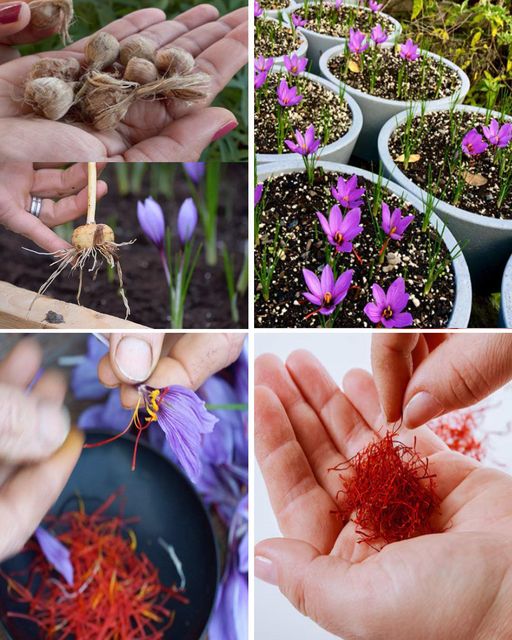Saffron, renowned as the world’s most expensive spice, is prized for its vibrant color, unique flavor, and medicinal properties. Derived from the delicate threads of the Crocus sativus flower, saffron has been coveted for centuries by chefs, herbalists, and artisans alike. While traditionally cultivated in regions with specific climatic conditions, it’s entirely possible to grow saffron at home, allowing enthusiasts to savor its exquisite qualities firsthand. In this guide, we’ll explore the steps to successfully cultivate saffron in your own garden or indoor space, unlocking the secrets of this luxurious spice.
Selecting the Right Bulbs:
The first step in growing saffron is acquiring high-quality saffron corms, which are the bulb-like structures that produce the flowers. It’s essential to purchase corms from reputable suppliers to ensure viability and authenticity. Opt for large, healthy corms with firm texture and no signs of mold or damage. Saffron corms are typically available for purchase in late summer or early fall, the ideal time for planting.
Choosing the Right Location:
Saffron thrives in well-drained soil and full sun, making it suitable for a variety of garden settings. Select a sunny spot in your garden or a location with at least six hours of direct sunlight per day. Ensure that the soil is loose, sandy, and rich in organic matter to promote healthy growth. If planting in containers, use a well-draining potting mix and place the pots in a sunny area, such as a patio or balcony.
Planting and Care:
Plant saffron corms in late summer or early fall, ideally around late August to early September, to allow them to establish before winter dormancy. Dig shallow holes or trenches about 4-6 inches deep and space the corms 4-6 inches apart. Place the corms with the pointed end facing upwards and cover them with soil, lightly pressing down to secure them in place. Water thoroughly after planting and continue to water regularly, keeping the soil evenly moist but not waterlogged.
Harvesting Saffron:
Saffron flowers typically bloom in the fall, usually from late September to early November, depending on your location and climate. Each flower produces three bright red stigmas, which are the prized saffron threads. To harvest saffron, carefully pluck the stigmas from the flowers using tweezers or your fingers. Handle the delicate threads with care to avoid damaging them. Once harvested, saffron threads can be dried and stored in an airtight container for future use in culinary or medicinal applications.
Overwintering:
After flowering, saffron plants enter a period of dormancy during the winter months. Mulch the soil around the plants to protect the corms from freezing temperatures and moisture loss. In spring, as temperatures warm up, saffron plants will begin to sprout new foliage, signaling the start of a new growing season. Resume regular watering and fertilize lightly with a balanced fertilizer to support growth and flowering.
Growing saffron at home is a rewarding endeavor that allows you to experience the magic of cultivating the world’s most expensive spice right in your own backyard or indoor space. By following these simple steps and providing the right growing conditions, you can enjoy a bountiful harvest of saffron threads to elevate your culinary creations and enrich your life with the exquisite flavor and aroma of this precious spice. So why not embark on the journey of growing saffron and add a touch of luxury to your home garden?
